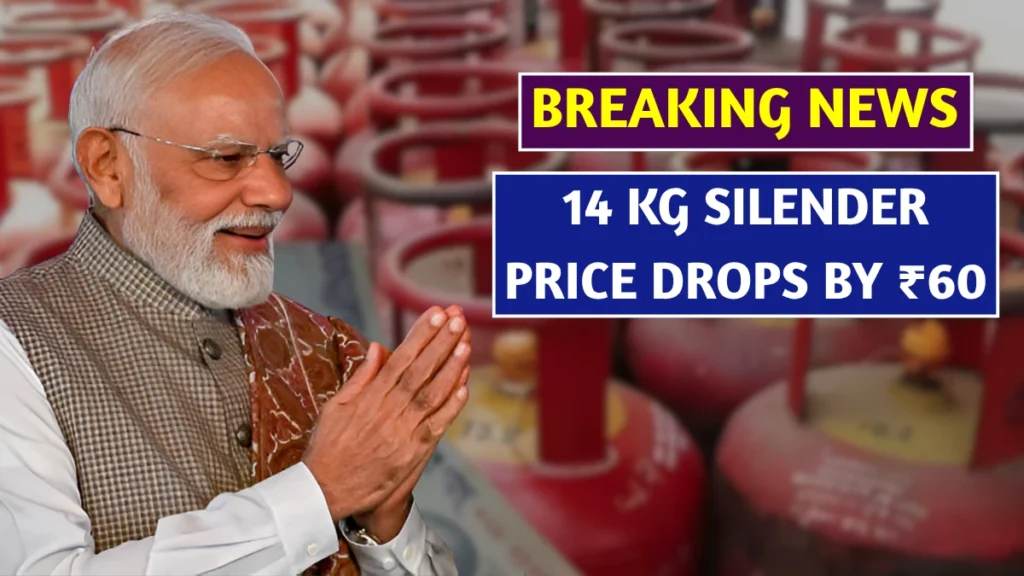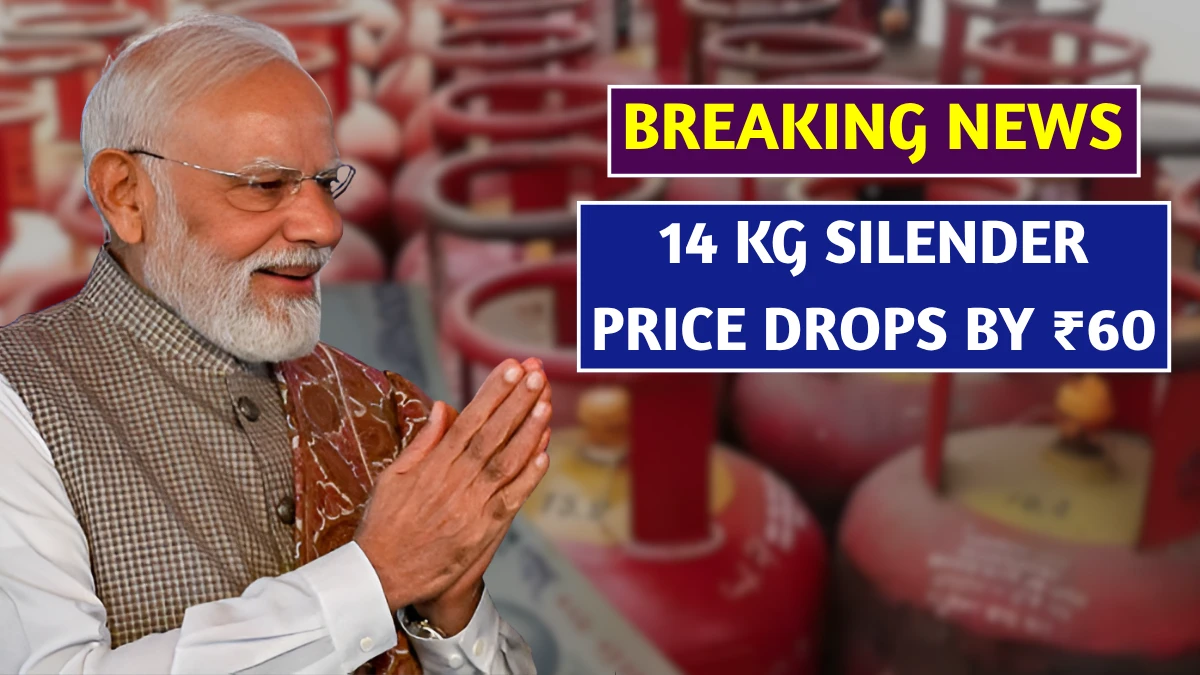14 kg Silemder Price Drops by ₹60: The market for gas cylinders has always been dynamic, with prices fluctuating due to various factors like supply-demand conditions, government policies, and geopolitical influences. Recently, there has been a significant price drop in the 14 kg Silemder gas cylinder, which has caught the attention of consumers and industry analysts alike.
In this article, we will delve into the reasons behind the ₹60 price reduction, what this means for consumers, and analyze the current market trends for this essential household item.

Understanding the Price Drop
Silemder, a popular brand of liquefied petroleum gas (LPG) cylinders, has recently reduced the price of its 14 kg gas cylinder by ₹60. This reduction comes at a time when the cost of living has been on the rise, and the cost of energy resources, including gas, has been subject to frequent adjustments. The price drop, though modest, could have a significant impact on households that rely on gas cylinders for cooking and heating needs.
While a ₹60 reduction might seem small, it is important to understand that over time, these adjustments add up, especially for large families or those who use multiple cylinders each month. The decision to lower the price may have been influenced by a variety of factors, including changes in the global energy market, shifts in local supply chains, or even regulatory changes from the government.
Factors Affecting Gas Cylinder Prices
To understand the reasons behind the price drop, it is essential to consider the broader economic landscape. Gas cylinder prices are influenced by several factors. One of the primary contributors is the global price of crude oil. When oil prices rise, the cost of producing and transporting LPG increases, leading to higher cylinder prices for consumers. Conversely, when oil prices fall, there is a corresponding reduction in gas prices.
Another key factor that affects gas cylinder prices is the exchange rate. India, like many other countries, imports a significant amount of its LPG from international markets. Therefore, fluctuations in the value of the Indian Rupee against the US Dollar can impact the cost of gas. If the rupee strengthens, it can make imports cheaper, which may lead to a decrease in gas cylinder prices.
In addition, domestic supply-demand dynamics play a role in pricing. If there is an overproduction of LPG or if demand decreases due to seasonal changes, prices may drop. Conversely, during times of high demand, such as the winter months or festival seasons, prices may increase.
Silemder’s Position in the Market
Silemder is one of the well-known brands in the LPG cylinder market, offering reliable and efficient products for domestic and commercial use. The company’s decision to reduce the price of its 14 kg gas cylinder is a strategic move that is likely to boost its competitiveness in the market. With many consumers feeling the financial strain of rising prices, even a small price drop can make a big difference.
This price reduction is expected to attract more customers, especially those who use LPG cylinders frequently and are looking for more affordable options. Silemder’s commitment to quality and safety, combined with the price adjustment, positions the brand as a strong contender in the gas cylinder market.
Consumer Impact and Savings
For an average household that uses a 14 kg gas cylinder monthly, the ₹60 price reduction can result in significant savings over time. While it might not seem like much on a per-cylinder basis, when multiplied by the number of cylinders purchased annually, the savings can add up to a considerable amount.
For instance, if a family uses 12 cylinders a year, the ₹60 price reduction would result in a savings of ₹720 annually. For larger families or those with higher consumption, the savings could be even greater. In today’s economy, where inflation is affecting nearly every aspect of daily life, even small price cuts are appreciated and can ease the financial burden on consumers.
Additionally, this price drop could have a ripple effect across the entire LPG market. If other brands follow suit and lower their prices in response to Silemder’s decision, it could lead to broader price reductions across the industry, benefiting even more consumers in the long run.
Global and Domestic Market Trends
The LPG market is heavily influenced by both global and domestic trends. On the global front, the energy market is experiencing volatility due to factors such as fluctuating oil prices, geopolitical tensions, and shifts in global energy consumption patterns. In recent years, the demand for cleaner and more sustainable energy sources has been on the rise, which has led to increased competition among energy providers, including those offering LPG.
Domestically, the Indian government has been taking measures to promote the use of LPG as a cleaner alternative to traditional cooking fuels like wood and coal. Through initiatives like the Pradhan Mantri Ujjwala Yojana, millions of households have received subsidized LPG connections, boosting demand for gas cylinders. As a result, the LPG market has been expanding, and companies like Silemder have been working to meet the growing demand while also keeping prices competitive.
Moreover, there has been an increasing focus on reducing the carbon footprint and promoting cleaner cooking solutions. This has further elevated the demand for LPG, making it an essential commodity for many households. As demand continues to grow, companies in the sector are likely to continue adjusting their prices to stay competitive.
Safety Features and Specifications
Silemder’s 14 kg gas cylinders are equipped with several safety features to ensure safe usage. These cylinders are manufactured with high-quality steel that is resistant to corrosion and wear, ensuring longevity and durability. The cylinders also feature advanced valve mechanisms that reduce the risk of leaks and ensure a steady flow of gas. In addition, Silemder cylinders are fitted with an anti-theft valve that prevents unauthorized access to the gas, ensuring both safety and security for consumers.
The cylinders are designed to be lightweight and easy to transport, making them ideal for households and businesses alike. The 14 kg size strikes a balance between providing enough gas for cooking needs while still being manageable in terms of weight. The cylinder is also equipped with clear markings to indicate the gas level, helping users monitor their consumption and plan for refills more effectively.
These specifications not only make Silemder gas cylinders a reliable choice for consumers but also reflect the company’s commitment to safety and customer satisfaction. With regular maintenance and proper handling, these cylinders can provide years of safe service.
Future Price Predictions
Looking ahead, it is difficult to predict with certainty whether the price of 14 kg Silemder cylinders will continue to drop or increase. However, based on current market conditions, the price could remain stable for the foreseeable future. If global crude oil prices stabilize or continue to decrease, there may be room for further price reductions. Conversely, if oil prices rise or if domestic supply chains face disruptions, we may see prices increase once again.
Government policies will also play a crucial role in shaping the future of gas cylinder pricing. The government’s efforts to control inflation and promote affordable energy solutions will likely influence the pricing decisions of companies like Silemder.
Conclusion
The recent ₹60 price drop for the 14 kg Silemder gas cylinder is a welcome change for consumers, offering them an opportunity to save money in an otherwise challenging economic environment. While the price reduction may seem modest, it could have a significant impact on households, particularly those that rely heavily on LPG cylinders. As the market continues to evolve, consumers can expect further price fluctuations, and it will be interesting to see how other brands and government policies respond to these changes. Ultimately, this price drop is a reminder of the complex forces at play in the global and domestic energy markets and the importance of staying informed about such developments.
Disclaimer
This article discusses the recent ₹60 price drop in the 14 kg Silemder gas cylinder, providing insights into the factors influencing LPG prices and their impact on consumers. The information is based on current market trends and may be subject to change. For official pricing and policy updates, it is advised to consult with relevant authorities or directly with the supplier. Prices and availability may vary based on location and market conditions.
